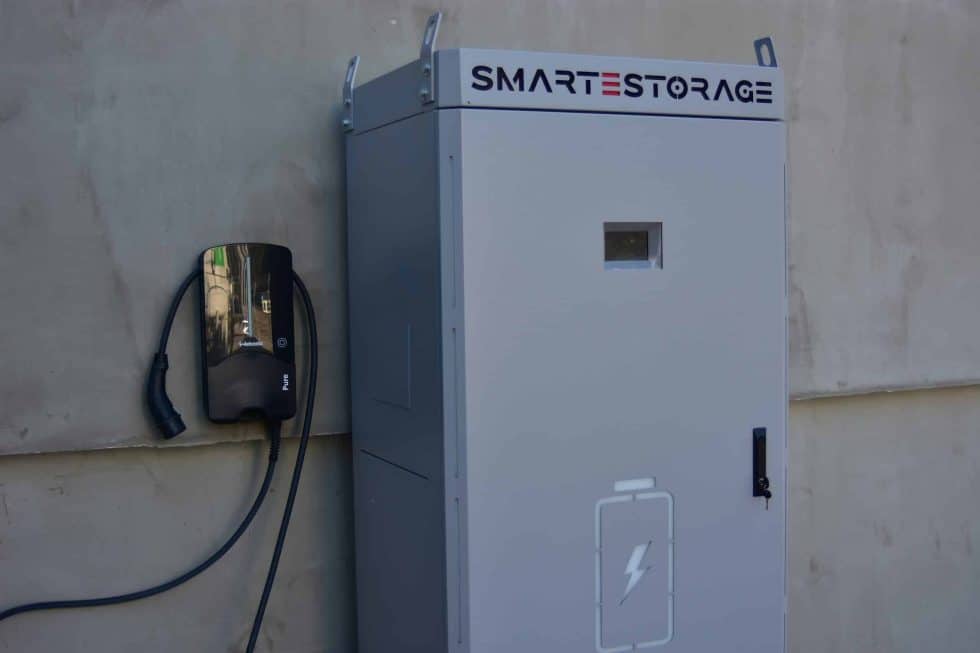Battery energy storage systems can be evaluated based on several categories
- Performance: This includes energy capacity, power capacity, round-trip efficiency, and cycle life.
The energy capacity of a battery energy storage system (BESS) refers to the amount of energy it can store and deliver to the grid. It is typically measured in kilowatt-hours (kWh) or megawatt-hours (MWh). The energy capacity of a BESS depends on several factors, including the size and number of batteries, the type of battery technology used, and the operating voltage and current.
The power capacity of a battery energy storage system (BESS) refers to the maximum amount of power that it can deliver to the grid at any given time. It is typically measured in kilowatts (kW) or megawatts (MW). The power capacity of a BESS determines the maximum rate at which it can deliver energy to the grid, and it is a critical factor in determining the BESS’s ability to meet the grid’s power demands.
Round-trip efficiency (RTE) is a measure of the efficiency of a battery energy storage system (BESS). It represents the proportion of energy that is stored in the battery and then retrieved and used, compared to the total amount of energy that was originally put into the battery.
The RTE of a BESS is calculated as the ratio of the energy output from the battery to the energy input required to charge the battery, expressed as a percentage. A BESS with a high RTE is more efficient, as it results in less energy loss during charging and discharging cycles. A BESS with a low RTE is less efficient and results in more energy loss.
The RTE of a BESS is influenced by several factors, including the type of battery technology used, the operating temperature, the depth of discharge, and the charging and discharging rate. A typical RTE for a BESS is around 80-90%, although some advanced BESS technologies can achieve RTEs above 95%. The RTE of a BESS is an important consideration when evaluating its economic viability and overall performance.
Cycle life is a measure of the number of full charge-discharge cycles that a battery energy storage system (BESS) can undergo before its capacity decreases to a specified level. It is a critical factor in determining the overall lifespan and reliability of a BESS.
The cycle life of a BESS depends on several factors, including the type of battery technology used, the depth of discharge, the charging and discharging rate, and the operating temperature.
- Cost: This includes the cost of the system itself, installation costs, and operating and maintenance costs.
- Reliability: This includes the reliability of the components, the likelihood of failures, and the robustness of the system as a whole.
- Scalability: This includes the ability to expand the system as energy storage requirements grow over time.
- Compatibility: This includes compatibility with other components in the energy storage system, such as inverters and renewable energy sources like solar or wind.
- Safety: This includes the safety of the system for workers and the public, and the likelihood of fires, explosions, or other hazardous events.
- Environmental Impact: This includes the impact of the manufacturing process and disposal of the system on the environment.
- Ease of Maintenance: This includes the ease of maintenance of the system and the availability of replacement parts.
- Regulatory Compliance: This includes compliance with relevant regulations and standards, such as safety and environmental standards.
- Adaptability: This includes the ability to adapt to new technologies and changing energy storage requirements.
However, in order to evaluate the system based on the above criteria, the purpose has to be well defined, in other words, what is it going to be used for? Battery energy storage systems are typically used for the following purposes:
- Grid-level storage: To store excess energy generated from renewable energy sources and feed it back into the grid when needed.
- Backup power: To provide backup power during power outages or grid failures.
- Peak shaving: To reduce peak energy demand and associated charges.
- Microgrids: To support remote communities, islands, and off-grid locations with their energy needs.
- Electric vehicles (EVs): To support the charging infrastructure for EVs.
- Ancillary services: To provide grid services such as frequency regulation, voltage control, and spinning reserve.
- Renewable integration: To smooth out the fluctuations in renewable energy generation and provide a consistent source of power.
- Time-of-use (TOU) management: To shift energy consumption from high-cost to low-cost periods and reduce electricity bills.
- Energy arbitrage: To buy energy when it’s cheap and store it for later use when prices are high.
- Solar self-consumption: To store excess solar energy generated during the day for use at night.
- Power quality improvement: To mitigate power quality issues such as voltage sags, surges, and harmonics.
- Islanding protection: To ensure a smooth transition to backup power during grid failures and prevent damage to sensitive equipment.
Only after the above criteria are all well defined, and we have taken into consideration insurance, warranties, the current and anticipated future cost of energy and any incentives available, can we calculate an accurate Return On Investment (ROI) for our systems.

